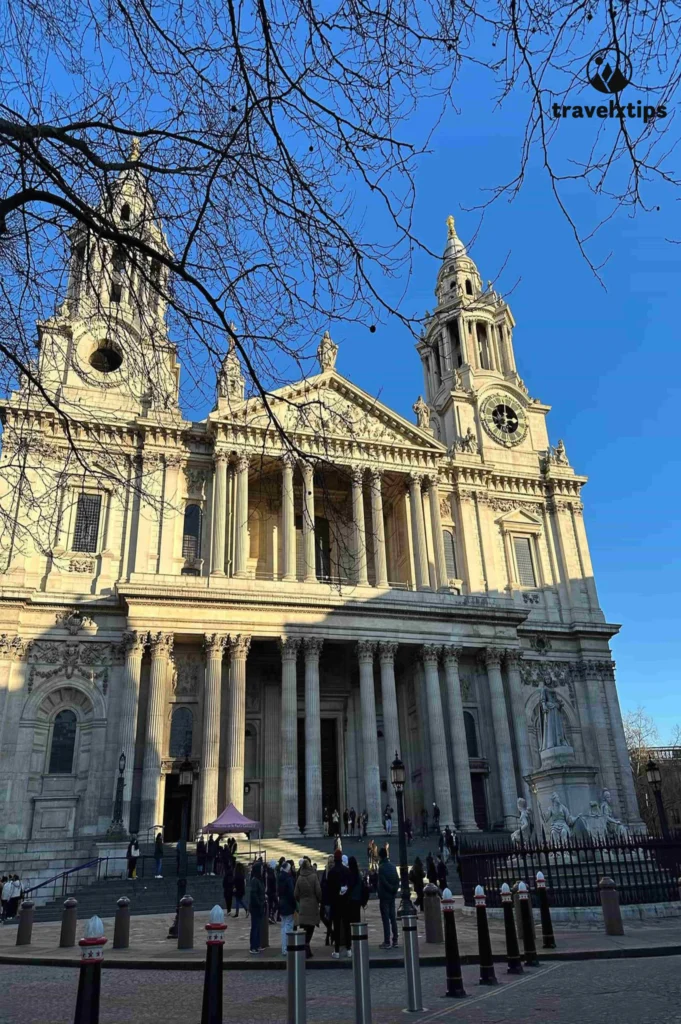Mdina Malta
Mdina, the “Silent City” in the center of Malta, is a historic gem very well known on this island once the capital of Malta. This is an eighth-century fortification in the hills. Peace and time are felt more strongly in the countryside than anywhere else. This city has been around for 4000 years. Supposedly, it is the oldest city in Malta, with wall constructions incorporated into it in both baroque and medieval styles; therefore it is one and only. It is an amazing quiet town with restaurant service steeped with tradition and a historic atmosphere. Mdina is an excellent way of showing off Maltese heritage in a tranquil setting, thus presenting a distinctive experience for visitors and history enthusiasts alike.
Places to visit in Mdina
Mdina is a historic gem with many beautiful attractions showcasing its history and architectural beauty.
Mdina Gate
The Mdina Gate is a famous landmark in Mdina Malta. It is also known as the main gate of the Bieb l Belt. The gate was constructed in 1724 during the rule of Portuguese Grand Master Antonio Manoel de Vilhena. An earlier medieval gate was designed to be replaced by this masterpiece. The Mdina Gate is a perfect example of Baroque Architecture.

The gate exhibits classical Baroque symmetry, emphasizing grandeur and balance in its design. Constructed primarily of local limestone, the gate blends seamlessly with the rest of Mdina’s fortified walls. Despite its decorative elements, the gate retains its original defensive function, integrated into the city’s thick ramparts.
The gate was a part of the fortified system, with a moat and bastions enhancing its defensive capabilities. Though designed to impress, its structure still allowed for fortification against potential invaders. The gate’s dual purpose as a stronghold and a statement of authority underscores Mdina’s historical significance. Which makes it a standout architectural landmark and a cherished symbol of Malta’s cultural heritage.
Palazzo Falson
Palazzo Falson is a historical house museum in the center of Mdina, Malta. The palazzo was a former home of Capt. Olof Frederick Gollcher OBE (1889-1962), was the heir of a prosperous shipping merchant of Swedish descent who spent his life collecting historically crafted objects. This place is beautifully preserved and is a treasure of arts, antiques, and historical artifacts.

The palace features a mix of Norman and medieval architectural elements, reflecting its origins and adaptations over the centuries. Also, the building is two stories high, surrounding a picturesque central courtyard, typical of traditional Maltese noble residences. The museum has a beautifully carved stone portal that serves as the entrance. It has decorative wooden balconies, mullioned windows, and a rooftop terrace that offers stunning views of Mdina and beyond.
Today, the Palazzo Falson operates as a historic house museum showcasing Gollcher’s extensive collections. The museum offers a diverse collection of paintings which includes Old Masters and rare works by notable European artists.

It has antique furniture, silverware, textiles, and decorative objects reflecting the lifestyle of Malta’s aristocracy. A collection of rare books and manuscripts, including some dating back to the 15th century. Intricate designs and rare coins offer insights into Malta’s economic history. An array of historic weapons, including swords, muskets, and suits of armor. Audio-guided tours are available at the museum guests can explore the palace at their own pace with a comprehensive audio guide available in multiple languages.
Pjazza Mesquita
Pjazza Mesquita is a hidden beautiful park in Mdina Malta. This beautiful park provides a serene escape from the bustling streets, inviting tourists to unwind amidst its lush gardens and charming pathways. The park is characterized by its stunning views of the surrounding countryside and the intricate architecture of Mdina, making it a perfect spot for photography enthusiasts and nature lovers alike.
Walking through Pjazza Mesquita, you will encounter vibrant flowers, manicured lawns, and shaded areas ideal for a leisurely picnic. The tranquil atmosphere allows visitors to immerse themselves in the beauty of nature while enjoying the area’s historical significance. The park is not only a place to relax but also serves as a cultural hub, often hosting various events that celebrate Maltese traditions.
Mdina Cathedral Museum
The Mdina Cathedral Museum, located in the historic city of Mdina, Malta, is a treasure trove of art, history, and religious artifacts. A magnificent St. Paul’s Cathedral adjacent to it houses the museum in an elegant baroque building, once a seminary. Built in the 1700s originally as a seminary under the patronage of Bishop Paul Alphéran de Bussan, the building has undergone a transformative journey throughout the centuries.

This museum has a rich collection of paintings, including works by renowned artists like Mattia Preti, who played a significant role in Malta’s Baroque art scene. The collection spans various eras and styles, providing insight into Malta’s artistic evolution. The museum holds a collection of ancient manuscripts and books, some dating back to the medieval period. Moreover, these documents offer a glimpse into Malta’s ecclesiastical and cultural history. Visitors can see intricately designed silverware and liturgical artifacts used in religious ceremonies, reflecting the island’s deep-rooted Christian heritage.
The museum holds one of Malta’s largest collections of coins, spanning from the Punic, Roman, and Byzantine periods to the era of the Knights of St. John. Most of the ancient coins are found in Blue Lagoon. Also, there’s a huge variety of historical documents and books including early printed texts and beautifully illuminated manuscripts. The chapel of the museum hosts rotating exhibitions that show different aspects of Maltese and European culture, history, and art. The Mdina Cathedral Museum is a must-visit place in Mdina Malta if you’re into history, art, and culture.
St Paul’s Cathedral Mdina
St. Paul’s Cathedral in Mdina is prominently located in the city center, making it impossible to miss. Designed by Lorenzo Cafa, the Cathedral has an estimated size and grandeur that one might be in awe of. Its dome is visible from a distance and decorated with startling frescoes depicting Biblical tales. The Cathedral is the metaphorical mother of all Maltese churches and is the official seat (Sedia) of the Maltese Archbishop, who preaches the word of God at several Masses.
One can appreciate the splendid representation of Baroque history and Catholic devotion inside St. Paul’s Cathedral. The ceilings and dome contain frescoes depicting scenes from St. Peter’s life, among which are also those of his shipwreck on the island. Also, Sunlight pours in through the windows to illuminate the frescoes beautifully. The patterned marble tombstones set on the floor bear the names and coats of arms of bishops, nobles, and other prominent figures of this area.
The interior is dominated by a gold-painted picture, “The Conversion of St. Paul,” by Mattia Preti. Every side of the cathedral hosts numerous chapels dedicated to various saints, including St. Publius, St. Agatha, St. Sebastian, the Virgin Mary, and St. John the Evangelist. These chapels boast altarpieces, sculptures, and richly decorated walls. The grand organ over the cathedral’s west entrance is frequently played during liturgical offices and other concerts, and its pipes resonate with the music. Light, art, and architecture merge to create a calm and majestic atmosphere inside St. Paul’s Cathedral. Characterized by Baroque ornamentation, and heightened by the religious significance of the site, a visit to this cathedral is obligatory during any tour of Mdina.
Palazzo Santa Sofia
It is also referred to as Ca’ d’Oro-the Beautiful Golden House. One of the best-known examples of Venetian Gothic architecture is located on the Grand Canal in Venice, Italy. Ca’ d’Oro is among the finest examples of Venetian Gothic architecture on the Grand Canal in Venice, Italy. It dates back from its commencement in 1421 to its completion in 1437. The Contarini family of Venice commissioned designs for its construction, and as the architects, Giovanni Bon and his son Bartolomeo built it accordingly.

Tempering towards Venetian Gothic style with heavy ornamentation, point arches, and intricately designed tracery. Ca’ d’Oro cognate with House of Gold takes its name from the original gilded and polychrome decorations with which it was once clad, much of which has now faded away. Palace with Istrian stone and Verona pink marble. Gothic with Byzantine and Moorish influences in windows with pointed arches and various other ornamental parts.
The Palazzo has been remodeled throughout the centuries. In the 19th century, Baron Giorgio Franchetti purchased it and initiated subsequent works of restoration to restore it to its original condition.
Mdina Dungeons Museum
The Mdina Dungeons Museum is a major attraction in Mdina. It offers visitors an immersive experience of the darker side of Malta’s history. It is located beneath the palace St. Publius Square, Mdina, Malta. The museum recreates scenes of torturing methods, historical punishments, and the justice system from the medieval and early modern periods.
The museum features life-like wax figures, sound effects, and dimly lit corridors to recreate a chilling atmosphere. The displays showcase the conditions of medieval dungeons, torture chambers, and execution methods. Moreover, the Mdina Dungeons Museum provides a truly memorable and dramatic experience for the bold and brave on often forgotten aspects of the dark past of Malta’s history.
How do you get to Mdina?
Getting to Mdina, Malta’s iconic “Silent City,” is straightforward, thanks to its central location on the island. Here’s a guide to help you reach this historic gem:
Bus: You can catch a bus from the main terminus in Valletta on routes 50, 51, 52, 53, and 56. If you’re in Sliema, the direct bus 202 departs from Sliema Ferry 5, as well as stops at Sliema Chalet, Ghadir, Torri, Exiles, and Antik. From the airport, you have the option of taking the X3 for a direct route or the 201. The bus ride from Valletta to Mdina typically takes about 30 to 40 minutes.
Taxi: Taxi are available from your hotel, or you can use a taxi app like Bolt, eCabs, or Uber. A trip from Sliema to Mdina will usually cost around €12.
Organized tour: Joining an organized tour to Mdina is a fantastic choice if you prefer not to deal with parking your car.
Bike: Riding a bike to Mdina is also an option.
Hop on hop off service: You can utilize a hop on hop off service to reach Mdina.
If you’ve liked the blog, you can also follow us on Instagram






